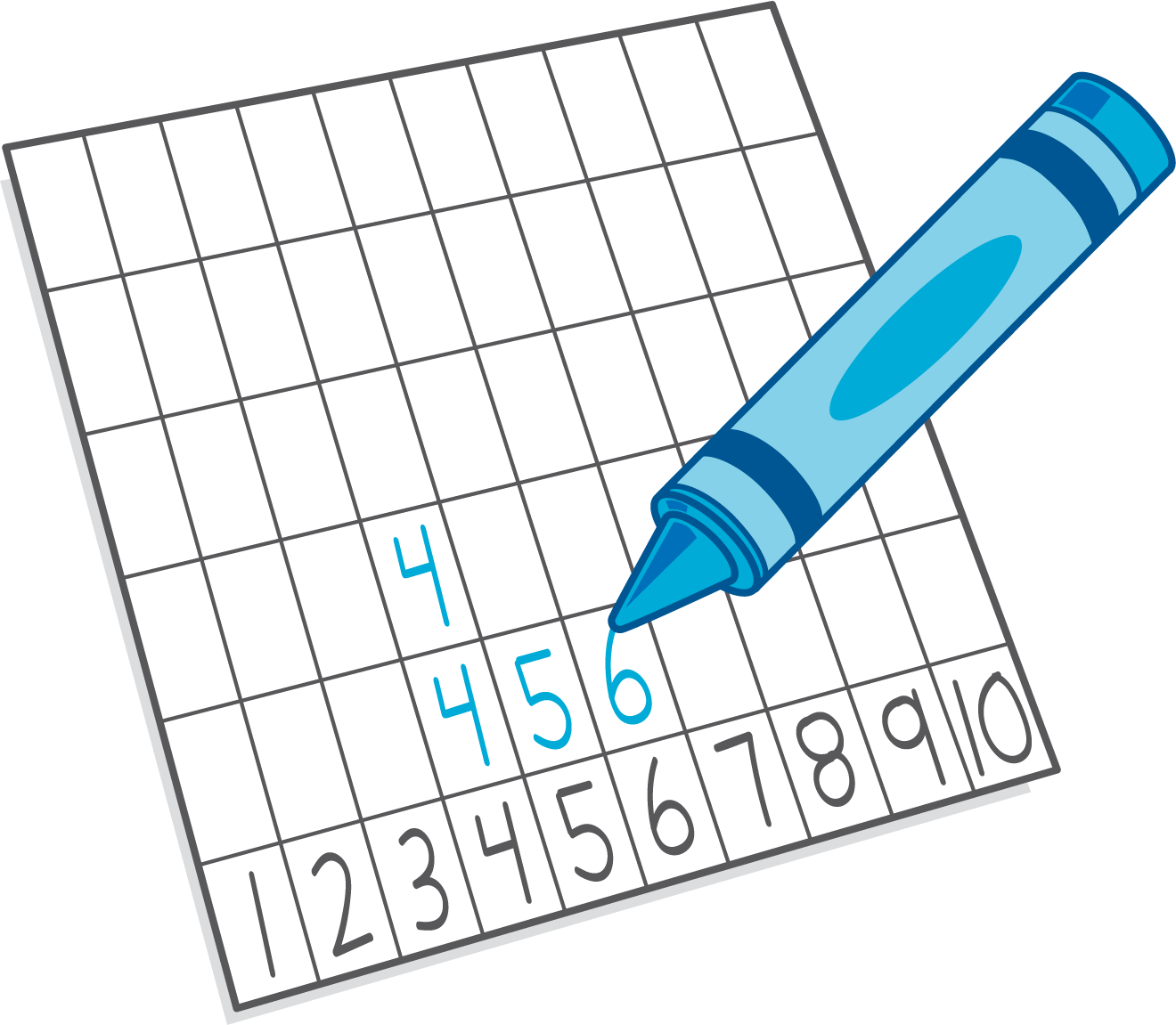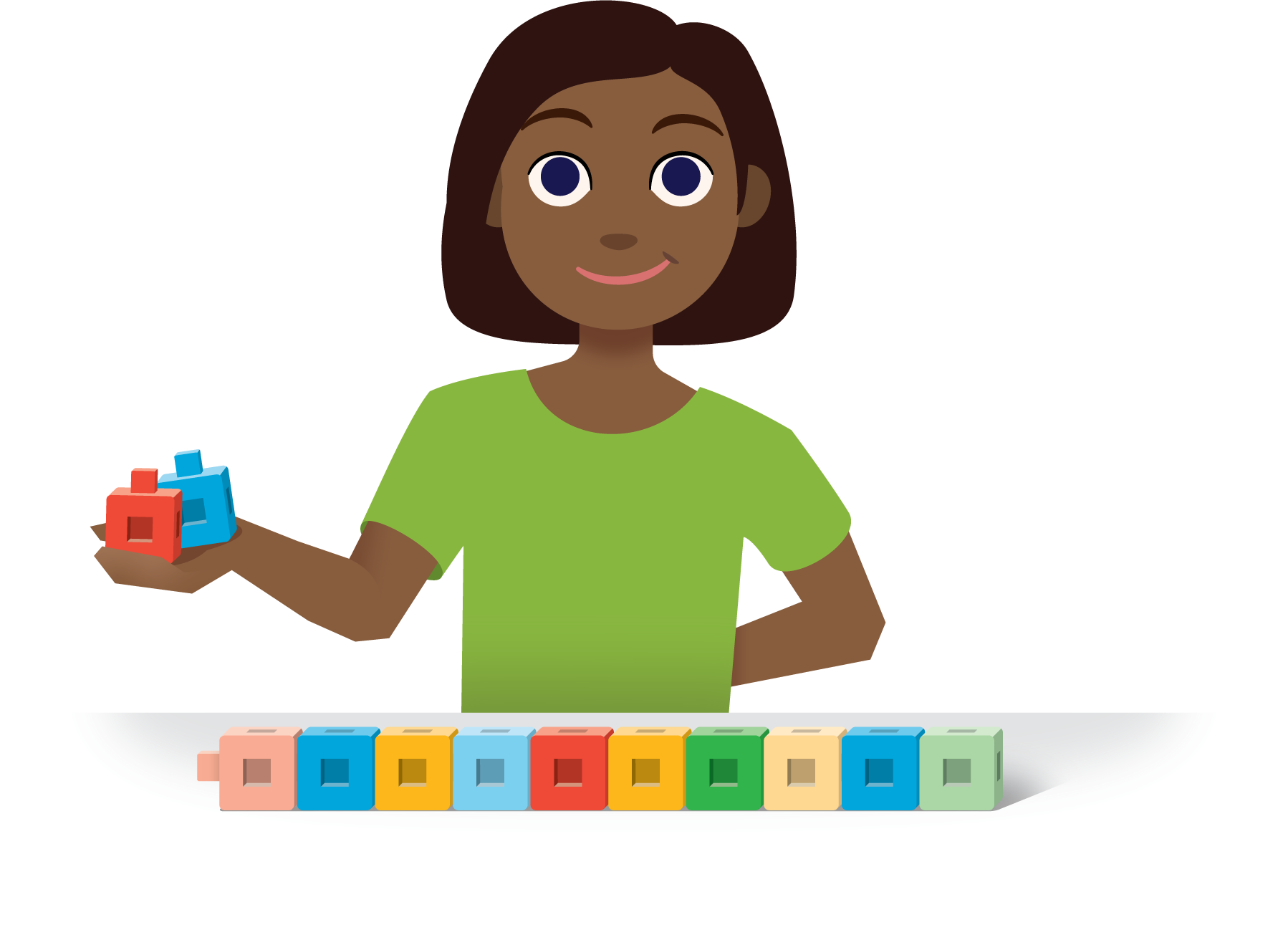Lesson 18
All the Ways to Make 10 (optional)
Warm-up: Number Talk: Add and Subtract 1 (10 minutes)
Narrative
Launch
- Display one expression.
- “Give me a signal when you have an answer and can explain how you got it.”
- 1 minute: quiet think time
Activity
- Record answers and strategy.
- Keep expressions and work displayed.
- Repeat with each expression.
Student Facing
Find the value of each expression.
-
\(4 + 1\)
-
\(5 + 1\)
-
\(8 - 1\)
-
\(7 - 1\)
Student Response
For access, consult one of our IM Certified Partners.
Activity Synthesis
- If needed, ask “How can you use counting to find the value of these expressions?” (I can start at the first number and count forward or backward 1. I can think about the number that comes before or after when I count.)
Activity 1: Ten Pigeons (10 minutes)
Narrative
The purpose of this activity is for students to solve a Put Together, Total Unknown story problem and a related Put Together/Take Apart, Both Addends Unknown story problem (MP2). Students may use the solution from the first story problem to help them solve the second story problem.
Advances: Listening, Representing
Required Materials
Materials to Gather
Required Preparation
- Students can use their bead tool from a previous lesson.
Launch
- Groups of 2
- Give students access to connecting cubes or two-color counters, bead tools, and 10-frames.
- Read and display the task statement.
- “Tell your partner what happened in the story.”
- 30 seconds: quiet think time
- 1 minute: partner discussion
- “Show your thinking using drawings, numbers, words, or objects.”
Activity
- 2 minutes: independent work time
- 2 minutes: partner discussion
- Repeat the steps with the second problem.
- Monitor for students who use the numbers from the first story problem to solve the second problem and for students who find other solutions.
Student Facing
-
There are 6 pigeons in the fountain.
There are 4 pigeons on the bench.
How many pigeons are there?Show your thinking with objects, drawings, numbers, or words.
-
There were 10 pigeons.
Some of the pigeons were in the fountain.
The rest of the pigeons were on the bench.
How many of the pigeons were in the fountain?
Then how many of the pigeons were on the bench?Show your thinking with objects, drawings, numbers, or words.
Student Response
For access, consult one of our IM Certified Partners.
Activity Synthesis
- “How are the two story problems the same?” (They are both about pigeons. There are 10 pigeons in both story problems.)
- “How are the two story problems different?” (In the first problem I know how many pigeons are in the fountain and how many are on the bench. In the second problem I know that there are 10 pigeons, but I don’t know how many are on the fountain and how many are on the bench. There is more than 1 way to solve the second story problem.)
- Invite a student who used the solution from the first story problem to solve the second story problem to share.
- “How did you know that there could be 6 pigeons in the fountain and 4 pigeons on the bench?” (In the first story problem there were 6 in the fountain and 4 on the bench.)
- “Were there any other ways to solve the second story problem?” (There could be 5 pigeons in the fountain and 5 on the bench.)
- “In the next activity, we will try to find all of the ways that the 10 pigeons could be in the fountain and on the bench.”
Activity 2: All of the Ways to Make 10 (10 minutes)
Narrative
The purpose of this activity is for students to find all of the compositions and decompositions of 10 in the context of a Put Together/Take Apart, Both Addends Unknown story problem. Monitor for students who:
- change the number of red and yellow counters on a 10-frame (MP5).
- move the beads on a bead tool (MP5).
- use their knowledge, possibly from memory, of different decompositions of 10.
- use patterns such as switching the number of pigeons in the fountain and on the bench (MP7).
The purpose of the activity synthesis is to use the 10-frame and the bead tool to visualize how the parts that make 10 are related, specifically that adding one to one number takes one away from the other number in the decomposition.
Supports accessibility for: Organization, Conceptual Processing
Required Materials
Materials to Gather
Required Preparation
- Students can use their bead tool from a previous lesson.
- Create a chart displaying solutions to be used during the lesson synthesis.
pigeons in the
fountainpigeons on the
bench9
8
7
6
5
4
3
2
1
1
2
3
4
5
6
7
8
9
Launch
- Groups of 2
- Give students access to connecting cubes or two-color counters, bead tools, and 10-frames.
- Display and read the task statement.
- “Work with your partner to show all of the ways that the 10 pigeons could be in the fountain and on the bench.”
Activity
- 7 minutes: partner work time
Student Facing
There were 10 pigeons.
Some of the pigeons were in the fountain.
The rest of the pigeons were on the bench.
How many of the pigeons were in the fountain?
Then how many of the pigeons were on the bench?
Show your thinking with objects, drawings, numbers, or words.
Student Response
For access, consult one of our IM Certified Partners.
Activity Synthesis
- Display a 10-frame with 9 red counters and 1 yellow counter and a bead tool with 9 beads on the left and 1 on the right.


- “How do the 10-frame and the bead tool show a solution for the story problem?” (There can be 9 pigeons in the fountain and 1 pigeon on the bench.)
- Switch one red counter to yellow, as pictured, and move 1 bead from the right to the left.


- “What if I change one of the red counters to yellow? What if I move one bead over?” (Then 8 pigeons are in the fountain and 2 pigeons are on the bench.)
- “Can I keep changing red counters to yellow? Can I keep moving the beads to the other side? What will happen?” (Yes, more pigeons will be on the bench and fewer pigeons will be in the fountain.)
Activity 3: Centers: Choice Time (20 minutes)
Narrative
The purpose of this activity is for students to choose from activities that offer practice with number and shape concepts. Students choose from 5 centers introduced in previous units. Students can choose to work at any stage of the centers.
- Shake and Spill
- Number Race
- Grab and Count
- What's Behind My Back?
- Pattern Blocks
Students will continue to choose from these centers in upcoming lessons. Keep the materials from each center organized to use each day.
Required Materials
Materials to Gather
Required Preparation
- Gather materials from:
- Shake and Spill
- Number Race
- Grab and Count
- What's Behind My Back?
- Pattern Blocks
Launch
- Groups of 2
- “Today we are going to choose from centers we have already learned.”
- Display the center choices in the student book.
- “Think about what you would like to do first.”
- 30 seconds: quiet think time
Activity
- Invite students to work at the center of their choice.
- 8 minutes: center work time
- “Choose what you would like to do next.”
- 8 minutes: center work time
Student Facing
Choose a center.
Shake and Spill

Number Race

Grab and Count

What's Behind My Back?

Pattern Blocks

Activity Synthesis
- “What makes working in centers fun for you?“
Lesson Synthesis
Lesson Synthesis
Display the chart with solutions to the story problem.
“Tyler and Priya recorded the different ways that the pigeons could be in the fountain and on the bench.”
| pigeons in the fountain |
pigeons on the bench |
|---|---|
|
9 8 7 6 5 4 3 2 1 |
1 2 3 4 5 6 7 8 9 |
“What do you notice? What patterns do you see?” (There are lots of ways to make 10. The numbers in one column are counting up and the numbers in the other column are counting down. I see that there are 7 and 3 and 3 and 7.)
Cool-down: Find 2 Solutions (5 minutes)
Cool-Down
For access, consult one of our IM Certified Partners.